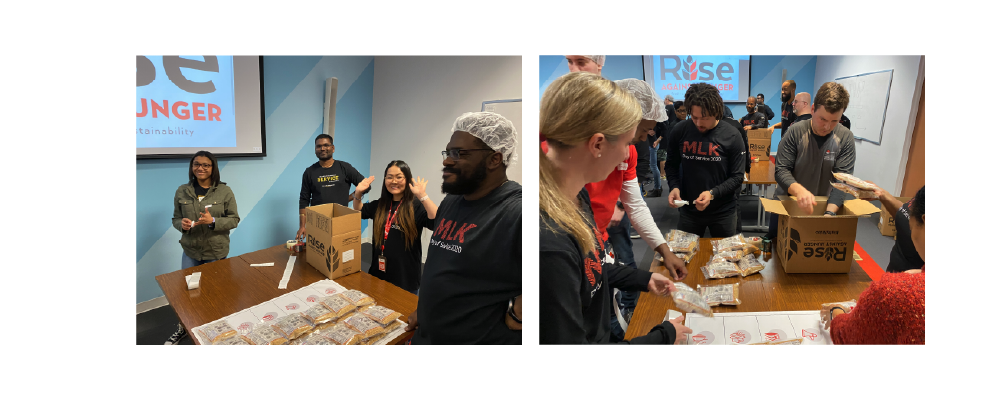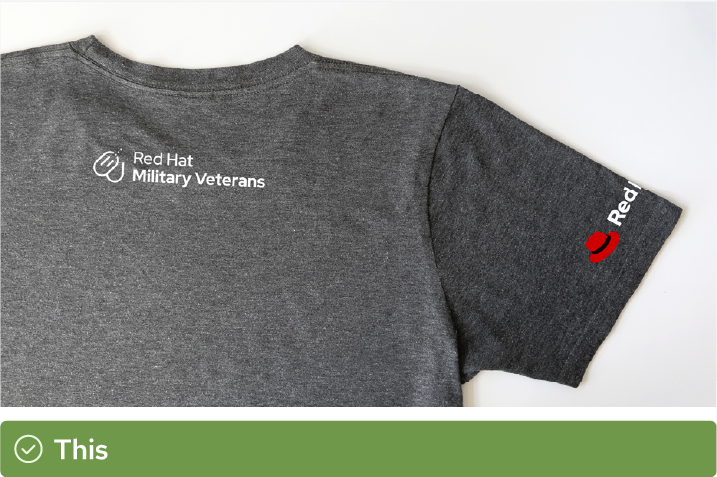Diversity, Equity, and Inclusion (DEI) Community brand handbook
At Red Hat, we commit to fostering an environment where each person feels seen, heard, and valued. We believe that the collective strength of our differences sparks open source innovation, and that our shared humanity unites us through a culture of belonging. Every day, we’re working to be a more diverse and inclusive company.
Part of that commitment means that Red Hat supports associate-led groups who share a common identity or experience and their allies. These DEI Communities help build stronger internal and external networks through social, educational, and outreach activities. Our approach to DEI Community branding balances the autonomy communities need to build those networks with the need to represent the Red Hat brand faithfully.
DEI Communities use elements of the Red Hat brand, but in novel ways that represent the culture and experiences of their members. New DEI Communities are established in collaboration with the DEI Community Engagement Manager, and should work with the Brand and Experience Design team to develop a distinctive brand within the Red Hat DEI Community branding system.
Red Hatters can learn more about getting involved with our DEI Communities on The Source.
Elements of a DEI Community brand
Community name
DEI Community names always start with “Red Hat,” followed by a name that is descriptive and resonates with the members of the community. Different communities have taken different approaches to their names.
Community logo
DEI Community logos are based on our initiative logos, but use colors other than red to capture the spirit of the community. A custom icon (based on our icon guidelines) sits to the left of the community name.
Color palette
Each DEI Community pulls different colors from our secondary color palette to create a distinctive color palette specific to their community. These colors are used in their logo, patterns, and other materials to create a cohesive brand. Some communities use colors in culturally-specific ways, so be sure to check the guidelines for each DEI Community.
Patterns
Patterns take elements from the DEI Community’s icon and cultural touchstones and repeat them to create dynamic visuals that can be applied in a range of creative applications.
Imagery
Photos are a great way to show the DEI Community in action. Consider taking photos during events that can be used in the future. You can also use headshots or portraits to highlight community members and their stories. In addition to photos, communities can use illustrations from our libraries.
DEI Community logos
Clear space is the area around the logo that should not have text, distracting graphics, or other logos. This allows the logo to be legible and stand out. The clear space for DEI Community logos is at least the height of the letter "R" in the word "Red."
DEI Community logos are based on the same logo system as our initiative logos. They always include the full name of the community and an icon that celebrates their shared culture. Unlike initiative logos, the icons in DEI Community logos use colors other than red and are always to the left of the name.
DEI community logos are produced in 2 full color versions: standard and reverse. They're also produced in one-color versions, but you should use the full color versions unless there's a production constraint requiring only one color.
Use your full DEI Community logo as provided.
For approved external communications, include the Red Hat logo as a supporting element. Learn more about the approval process for external DEI communications.
Do not use the icon alone. It may not be recognizable to everyone without context.
Do not co-brand DEI Community logos with Red Hat or other logos.
Do not disproportionately scale individual logo elements.
Do not change the colors in your DEI Community logo. The colors were chosen intentionally.
Applying elements of DEI Community branding
Each DEI Community has their own brand guidelines and presentation templates that make it easy to keep their brand consistent. Most of the time, the content and materials created by DEI Communities are intended to be used internally by the community and other Red Hatters. Those materials should use the DEI Community logo, colors, and patterns and don’t need to include the Red Hat logo.
A presentation to an internal audience should use the community’s presentation template that includes their DEI Community logo, not a Red Hat logo.
DEI Communities can use their logo, colors, and patterns to make their page on The Source reflect the culture and energy of their community.
Don’t include the Red Hat logo on internal-only materials.
Don’t use graphics or other elements supplied by outside organizations.
Don’t use fonts or colors that aren’t part of the Red Hat brand.
Don’t add DEI Community logos to existing Red Hat ads or graphics.
If a DEI Community wants to use materials externally—including for swag, social posts, or external events like campus visits or community outreach—they should have their materials reviewed and approved by the Red Hat Communications and Brand teams. The reviewers may recommend that the community add the Red Hat logo to their approved materials. When a DEI Community logo and Red Hat logo are used together, the DEI Community logo should be largest and most prominent, and the Red Hat logo should be smaller and in a separate area so that it’s clear that Red Hat plays a supporting role to the community.
Social media posts from Red Hat-owned accounts that highlight DEI Communities should be reviewed by the Red Hat Communications team and include a Red Hat logo in addition to the DEI Community logo.
Swag is always external, so it should be reviewed and include a Red Hat logo. If possible, use two different imprint areas for the Red Hat and DEI Community logos.
Presentations to external audiences, like campus visits or community outreach, should be reviewed and use a template that includes the Red Hat logo as well as the DEI Community’s logo and branding.
Our DEI Communities
Each of our Red Hat DEI Communities has their own community resources and design guidelines. These links require Red Hat credentials for access.


